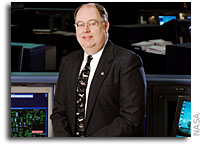Wayne Hale’s NASA Blog: Friday potporri

Short post today. We are working on the great bureaucratic task of building briefing books for the new administration’s transition team. It doesn’t matter which party wins, we have to prepare a concise, yet bureaucratic, set of information to hand them after the election so they will be ready to run the government on January 21. I’m on the team that is updating the NASA book, in particular the Space Operations Mission Directorate book. Its the nitty-gritty non-glamorous type of task that every job has.
Meanwhile, I thank everybody who has been helpful in propping up my failing memory. Here are two corrections: the SSME nozzle is made up of 1080 individual tubes brazed together, not the 1060 as I wrote in my blog previously (loss of 20 tubes is catestrophic!) My first assignment as Shuttle Entry Flight Director was STS-31, which landed in the morning, not afternoon, in California. Sorry for all the detective work that folks put in trying to identify that flight which I incorrectly listed as having been an afternoon landing. My only excuse is that it always seems like 2 AM inside mission control . . . .
I appreciate the questions that folks send in and wish I could answer them all. Here is a smattering of responses to comments received over the last couple of weeks.
Are my blogs available in various foreign languages. No, sorry. Not likely to happen soon.
To the young person who is interested in O3 at the moon: there is no appreciable atmosphere on the moon, for all intents and purposes it is a vacuum. O3 is also better known as ozone which is a toxic gas, unsuitable for human breathing. It would be better if we find water ice at some shadowed crater on the moon and dissassociate the hydrogen and oxygen to make breathable O2.
Why anyone would say that the X-38 CRV “violates the fundamental laws of physics” is beyond me. It was well on the way to becoming a viable spacecraft. Although I must point out that they had their issues with parachutes!
Off the track comment: many folks have been looking at the video of the Orion test parachute failure. This is probably a good study of the sociology of the web or at least of journalism. The failure was in the test rig setup, not the actual space flight parachutes. And there were a dozen successful tests that preceded the one failure. Nobody has filed a FOIA request for videos of the good tests. Hmm.
Lean Six Sigma is a management technique that, like many management techniques, was developed for a large production process. While it is not specifically designed for the small production runs and unique processes that NASA is typcially involved in, there is still a place to take some of those principles and apply them to our processes.
The shuttle does have an autoland capability built in that would probably work very well. On STS-53 we were well on the way to performing a flight demonstration of that capability, but the Associate Administrator, Gen. (retired) Jed Pearson, pulled the plug on the test shortly before we performed it. Like every test there was some risk, and despite our desire to demonstrate this system, Gen. Pearson believed we did not have a need to ever use it. So, after a lot of work, shuttle autoland has never been tested. The capability exists, however, and could be used in an emergency.
I had an interesting discussion with some of the orbital mechanics experts about whether a lunar base at the pole is harder to get to than one at the equator (like the Apollo landing sites). They did a good job of convincing me that going to the lunar poles is not harder, either from the delta-V standpoint (how much gas it takes) or the scheduling standpoint (how often you can go). Mid-latitude sites, neither at the poles or at the equator are the hardest. Someday this blog will tackle the mathematics . . .
Finally, somebody asked if I ever dreamed about being an astronaut. Well, who hasn’t? It would be great fun. But genetics ruled that out for me at a young age. I suppose someday I might get to ride as a passenger on the Pan Am shuttle to the moon, but that is a far cry from the current requirements to be an astronaut.
See you Monday from Washington . . .








